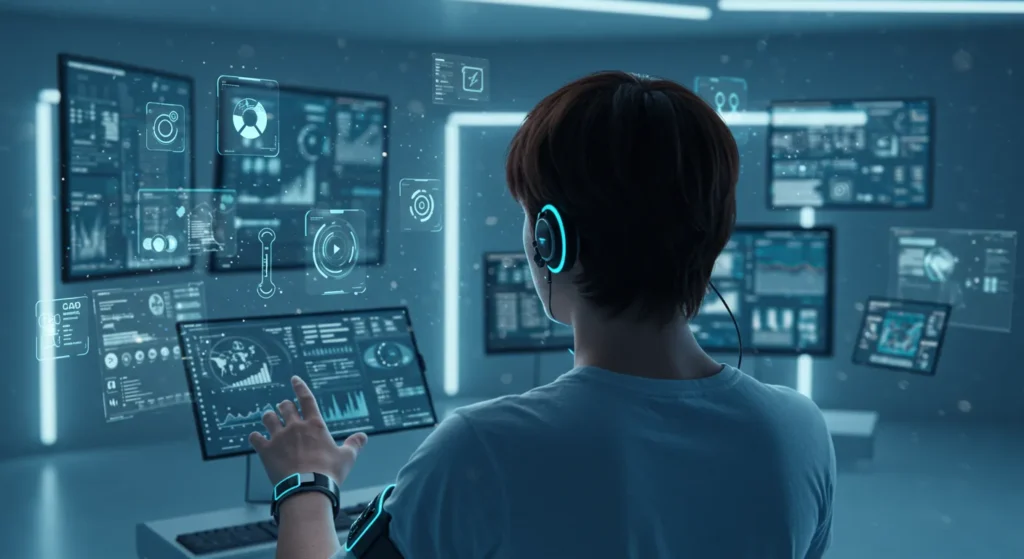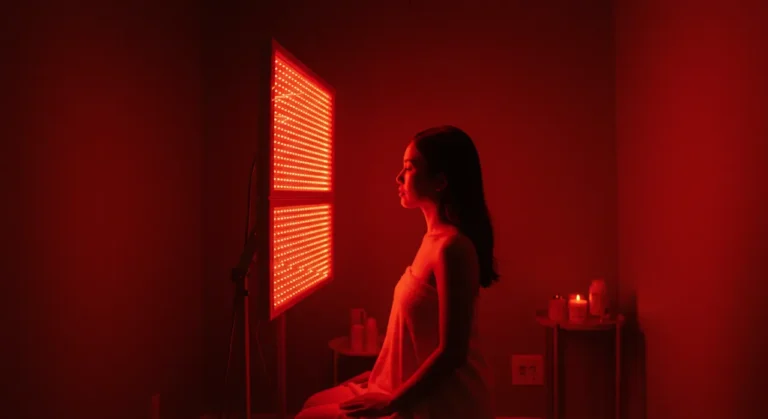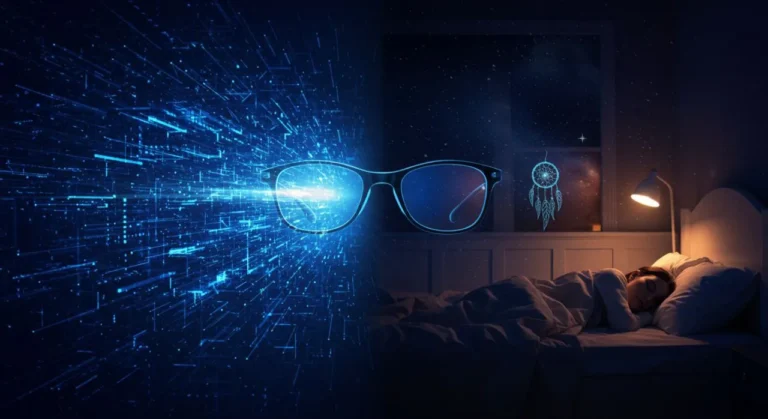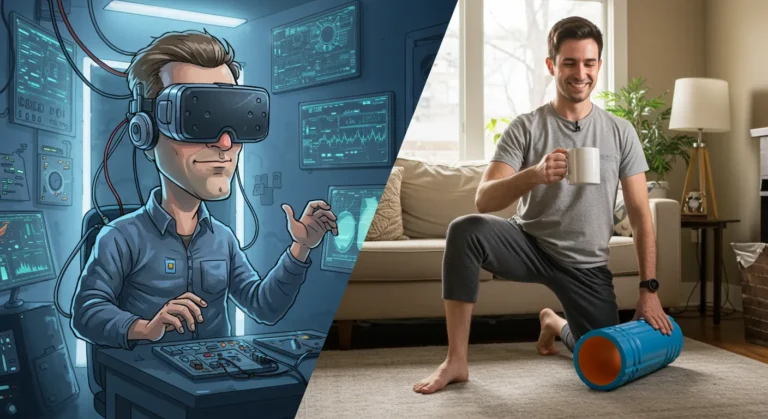The Best Biohacking Tools That Actually Work (No BS Guide)

Look, I get it. You’re scrolling through wellness content at 11 PM again, wondering if there’s actually something out there that could help you feel more… human. Less like you’re running on fumes and more like the person you know you could be.
Here’s the thing about biohacking tools—most of them are either overpriced gadgets or straight-up snake oil. But after years of testing (and plenty of buyer’s remorse), Federico and I have found five tools that genuinely move the needle. No miracle promises, just solid science and real results.
Why These Biohacking Tools Matter More Than You Think
When people hear “biohacking,” they picture expensive ice baths or $500 sleep trackers. That’s not what we’re about here. The best biohacking tools work because they help you optimize the basics—sleep, recovery, focus—in ways your body actually responds to.
Take Federico’s experience with our first recommendation. Guy was dragging himself out of bed every morning, hitting snooze three times minimum. One week with a sunrise alarm clock? Complete game-changer. No more afternoon caffeine crashes, no more zombie mornings. Sometimes the simplest shifts create the biggest waves.
The science backs this up too. Small, consistent optimizations compound over time. Your circadian rhythm responds to light cues. Your muscles recover faster with targeted wavelengths. Your brain focuses better when you’re properly hydrated. These aren’t revolutionary concepts—they’re just applied correctly.
The 5 Best Biohacking Tools We Actually Use
Let me be straight with you—we’ve tested dozens of devices, and most collect dust. These five made the cut because they work, they’re backed by real research, and they fit into normal life.
1. Portable Red Light Therapy Device
What it does: Delivers 660nm and 850nm wavelengths for muscle recovery and cellular energy Why we love it: Recovery time cut by 30% after workouts, plus it helps with that afternoon energy dip The catch: Around $140 isn’t pocket change, but compare that to monthly massage costs
I was skeptical until I used it on a pulled shoulder muscle. Three 15-minute sessions over two days, and the tightness was gone. The research on photobiomodulation is solid—it literally helps your mitochondria produce more ATP.
2. Xiaomi Smart Band 9
What it does: Tracks heart rate variability, sleep stages, and provides gentle wake-up alerts Why we love it: HRV data that actually makes sense, plus it doesn’t break the bank The catch: Less comprehensive than an Oura Ring, but honestly, do you need 47 different metrics?
This little tracker taught me I was chronically under-recovered. Once I started paying attention to my HRV scores, I adjusted my training intensity accordingly. Sleep quality improved within two weeks.
3. NoCry Blue Light Blocking Glasses
What it does: Filters blue light to support natural melatonin production Why we love it: No more “tired but wired” feeling at bedtime The catch: You’ll look like a safety inspector, but your sleep will thank you
Giulia swears by these for evening screen time. The difference in how quickly she falls asleep is noticeable—no more lying awake with racing thoughts after scrolling Instagram.
4. HidrateSpark Smart Water Bottle
What it does: Tracks hydration and sends gentle reminders to drink water Why we love it: Proper hydration affects everything—focus, energy, even mood The catch: Needs charging and costs around $76, but dehydration costs more in lost productivity
Sounds basic, right? But most people are chronically dehydrated and don’t realize it. This bottle helped me go from maybe 3 glasses of water daily to consistently hitting 8-10. The mental clarity difference is real.
5. Red Light Therapy Belt
What it does: Targeted red light therapy for specific body areas Why we love it: Great for localized pain relief and improved circulation The catch: Quality varies between brands, so check reviews carefully
Perfect for targeting specific problem areas. Federico uses it on his lower back after long desk days, and I’ve found it helpful for post-workout recovery on stubborn muscle knots.
How to Choose Your First Biohacking Tool
Don’t try to optimize everything at once—that’s a recipe for overwhelm and abandoned gadgets. Instead, ask yourself:
What’s your biggest pain point? Poor sleep? Low energy? Recovery issues? Start there.
What’s your realistic budget? You can get started with effective tools under $50. Don’t let perfect be the enemy of good.
Will you actually use it? Be honest. If you can barely remember to charge your phone, maybe skip the smart water bottle for now.
Do you want data or just results? Some people love tracking everything. Others just want to feel better. Both approaches work.
What Real Users Are Saying
The feedback on these tools has been consistently positive. One Amazon reviewer for the red light belt mentioned, “Within days I could tell a difference—muscles loosened.” That matches our experience perfectly.
Professional athletes have gravitated toward devices like the Oura Ring, which boasts 99% accuracy for heart rate measurements. But you don’t need to be elite to benefit from better recovery data.
Natural Alternatives That Cost Nothing
Before you spend a dime, try these free biohacks:
Morning sunlight exposure: 10-15 minutes outside within an hour of waking. Your circadian rhythm will thank you.
Cold shower finish: Just 30 seconds of cold water at the end of your shower. Improves circulation and wake-up alertness.
Evening light diet: Dim the lights 2 hours before bed. Your phone has a night mode—use it.
These simple practices often provide 70% of the benefit of expensive gadgets. Layer in the tools once you’ve mastered the basics.
Product Comparison Table
| Tool | Price Range | Best For | Standout Feature |
| Red Light Therapy Device | $120-160 | Muscle recovery, energy | Dual wavelength (660nm + 850nm) |
| Xiaomi Smart Band 9 | $30-50 | Sleep tracking, HRV | Excellent value for money |
| Blue Light Glasses | $15-40 | Evening screen use | Supports natural melatonin |
| Smart Water Bottle | $70-90 | Hydration tracking | Smartphone connectivity |
| Red Light Therapy Belt | $80-150 | Targeted pain relief | Wearable convenience |
Your Next Steps
Here’s what we’d do if we were starting over: Pick one tool based on your biggest challenge. Use it consistently for 30 days. Track how you feel—not obsessively, just noting energy levels, sleep quality, or whatever you’re trying to improve.
If it works, great. If not, return it and try something else. The goal isn’t to become a gadget collector—it’s to find what genuinely improves your daily experience.
As we always say: “Science-backed strategies for everyday people. No nonsense. Just better habits, tools, and choices.”
Ready to level up your wellness game? Check out our beginner-friendly biohacking guides for more practical strategies that actually work. And if you’re curious about the supplements that pair perfectly with these tools, we’ve got you covered there too.
Disclaimer: The information provided is for educational purposes only, not a substitute for professional medical advice. Always consult a healthcare professional.




